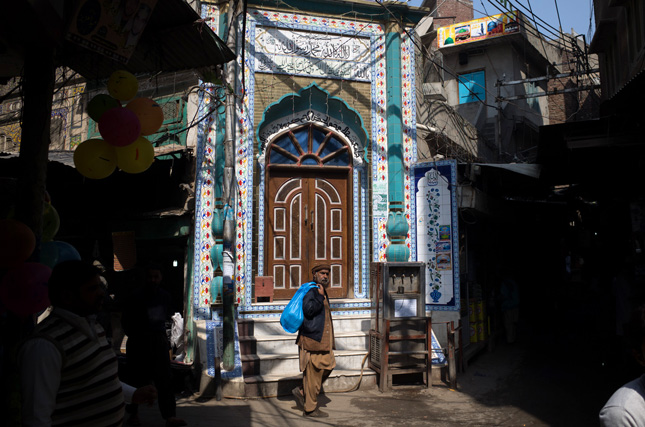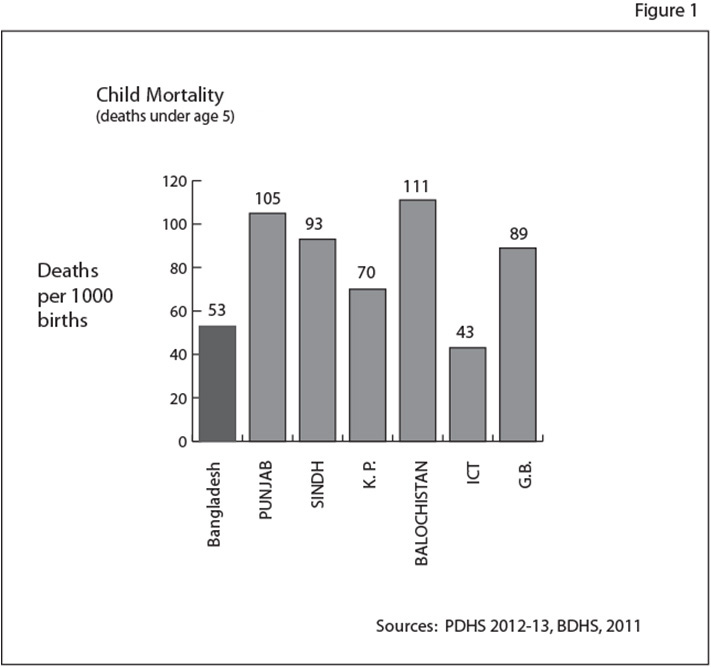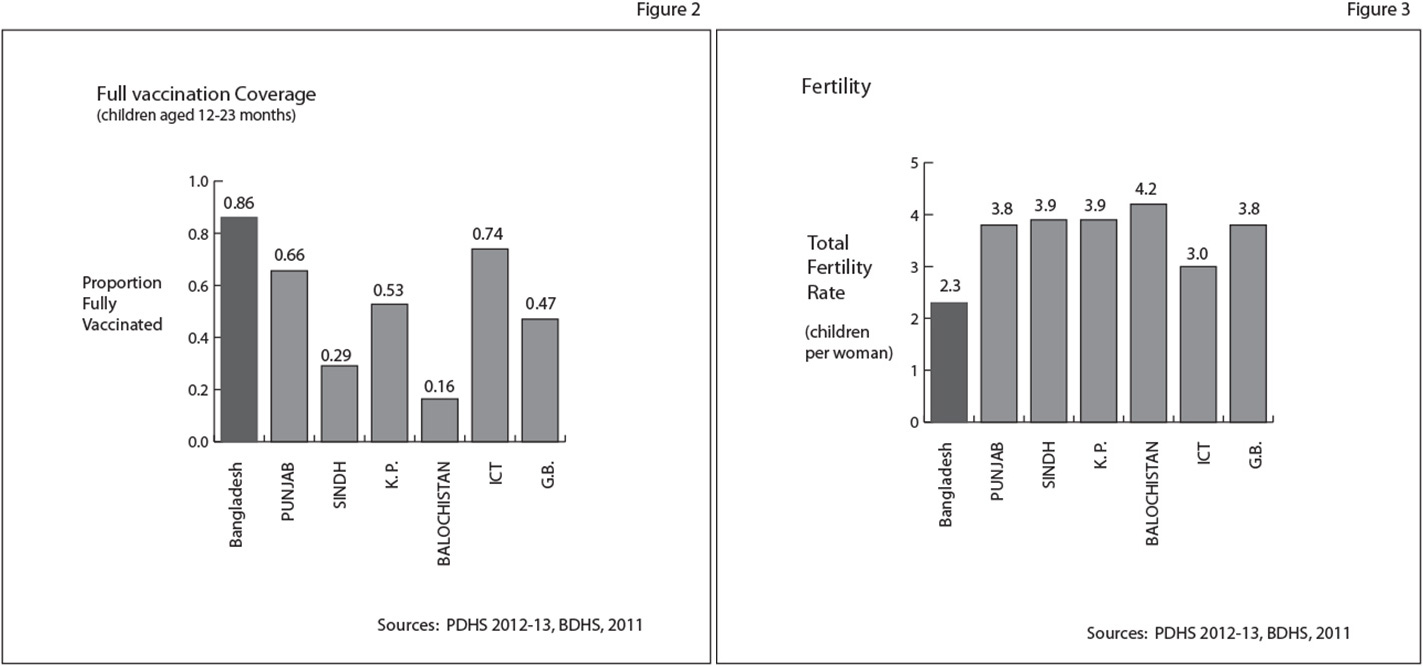-
Pakistan’s Most Recent Demographic and Health Survey Reveals Slow Progress
December 10, 2014 By Richard Cincotta
A quick scan through the charts and graphs of Pakistan’s most recent Demographic and Health Survey yields more than a few insights into the performance of the government’s health policies and the public health and demographic challenges it will face in the future.
Maternal and child health indicators have improved only marginally
How well did Islamabad measure up? Not well. The survey results are a disappointment for Pakistan’s public health professionals and women’s health advocates and warn of increasingly difficult conditions for rural service delivery. To some health program analysts, the results reflect the low priority given to public health and family planning for decades by Pakistan’s central government.
Pakistan’s maternal and child health indicators have improved only marginally since the last survey. Notably, the health sector has failed to keep pace with progress in either Bangladesh or Nepal, both of which lagged behind Pakistan in most public health indicators in the early 1990s. Similarly, as the decline in fertility has slowed in Pakistan (now at 3.8 children per woman), fertility rates in Bangladesh (2.3) and Nepal (2.6) have continued their declines.
War-torn Afghanistan is now the only country in the region with comparably adverse maternal and child health statistics. According to Afghanistan’s 2010 mortality survey, it appears to be closing the gap in several basic child-health measures.
Inching Forward
For decades, the venerable USAID-supported DHS Program has been conducting household surveys, as well as reporting on reproductive, maternal, and child health. This most recent survey is Pakistan’s third, following reports in 2006-07 and 1990-91. It covers five provinces: Punjab, Sindh, Khyber Pakhtunkhwa (KP), and Gilgit Baltistan (GB), plus the Islamabad Capital Territory (ICT). The Federally Administered Tribal Areas and Azad Kashmir were not surveyed.
 Results indicate only slight improvements in several key categories. Under-five mortality (the proportion of deaths of children aged less than 5 years) declined to 89 deaths per 1,000 births, down from 94 in the 2006-07 survey. Compare this to Bangladesh’s 53 per 1,000 and Nepal’s 54, reported in comparable 2011 surveys. Childhood vaccination rates (ages 12 to 23 months) in the surveyed regions rose from just 47 percent, as measured in 2006-07, to 54 percent.
Results indicate only slight improvements in several key categories. Under-five mortality (the proportion of deaths of children aged less than 5 years) declined to 89 deaths per 1,000 births, down from 94 in the 2006-07 survey. Compare this to Bangladesh’s 53 per 1,000 and Nepal’s 54, reported in comparable 2011 surveys. Childhood vaccination rates (ages 12 to 23 months) in the surveyed regions rose from just 47 percent, as measured in 2006-07, to 54 percent.Unsurprisingly, Pakistan’s public health infrastructure appears to operate most effectively in and around Islamabad and least successfully in the rugged, sparsely populated province of Balochistan. Otherwise, each province’s rank order varies from one maternal and child health indicator to another.
Unsurprisingly, public health infrastructure appears to operate least successfully in the rugged, sparsely populated province of Balochistan
For example, Punjab boasts the second highest proportion of fully vaccinated children at 66 percent, just behind the Islamabad Capital Territory’s 74 percent (see Figure 1). Yet, in terms of under-five mortality, KP, at 70 deaths per 1,000 births, is second to ICT’s lower rate of 43 per thousand (Figure 2).
For some analysts, the survey’s fertility results provide the most disappointing reflection of household conditions. The report found only a slight decline in total fertility rate, from 4.1 children per woman in the prior survey to 3.8 today. Whereas Islamabad’s total fertility rate has declined to 3.0, the six surveyed states appear to range closer to four children per woman mark (Figure 3).
Currently, about 26 percent of married Pakistani women use modern contraception – a significant jump up from the early 1990s when modern contraceptive use languished below 10 percent, but a small uptick from the 2008-09 assessment of 22 percent. According to the most recent survey, roughly one in five married Pakistani women have an “unmet need for family planning” – a stated desire to delay or limit births over the next two years, without safe and suitable contraception.
Homegrown Obstacles
At independence in 1947, West Pakistan is estimated to have had a population of nearly 36 million. Today, more than 185 million Pakistanis live within these borders, and that population is on track to reach around 250 million by 2035. This trajectory almost ensures that already-difficult urban governance and agricultural water management issues will present even greater challenges in the state’s future.
That said, political demographers view Pakistan’s stubbornly youthful age structure (median age about 23 years) and correspondingly hard-to-satisfy demands for education and jobs as the country’s most immediate demographic concerns. Pakistan’s workforce-eligible population (age 15 to 64 years) is growing at a rate of 2.6 percent per year. Notably, workforce growth in the United States – where employment rates and economic recovery are ongoing concerns – is substantially under 1 percent per year.
This trajectory almost ensures already-difficult issues will present even greater challenges in the future
Since Rahnuma, the family planning association of Pakistan, was first founded in 1953, the government’s political and financial support for family planning services has waxed and waned as successive governments flipped between military and civilian rulers and power shifted between religious and secular constituencies.
After having been virtually de-funded during the Zia Regime, family planning and related reproductive health programs were reorganized during the mid-1990s and assigned to the Ministry of Population Welfare. The new ministry – assisted by bilateral and international development agencies – managed to assemble a professional cadre of administrators and field workers and an extensive network of community-based “Lady Health Workers,” despite relatively modest funding. But the ministry was dissolved in 2010 when the 18th Amendment to Pakistan’s constitution devolved the administration of health services to individual provinces.
Pakistan’s public health service delivery system is now in flux. Critics of health-service devolution argue that provincial governments have neither the expertise nor the funds to support additional services – like those offered by the Lady Health Worker Program. Proponents of service devolution have virtually given up on the central government as a service provider, and point to the successes of some Indian states, particularly in the south, which re-prioritized and modernized their services with little assistance from India’s central government.
Undoubtedly, this demographic and health survey will serve as a baseline for future evaluations of Pakistan’s devolution experiment. For the time being, however, it provides a data-rich, but ultimately disheartening update on the country’s public health and demographic progress, and a window into Islamabad’s difficulties in achieving greater legitimacy among a diverse citizenry.
Richard Cincotta is a Wilson Center Global Fellow at the Stimson Center in Washington, DC.
Sources: The DHS Program, The Lancet, UN Population Division.
Photo Credit: Lahore walled city, courtesy of flickr user botterli. Charts: Arranged by Richard Cincotta, data from the DHS Program.
Topics: Afghanistan, Bangladesh, demography, development, family planning, featured, gender, global health, maternal health, Nepal, Pakistan, population, poverty, South Asia, U.S., youth
 A Publication of the Stimson Center.
A Publication of the Stimson Center.








